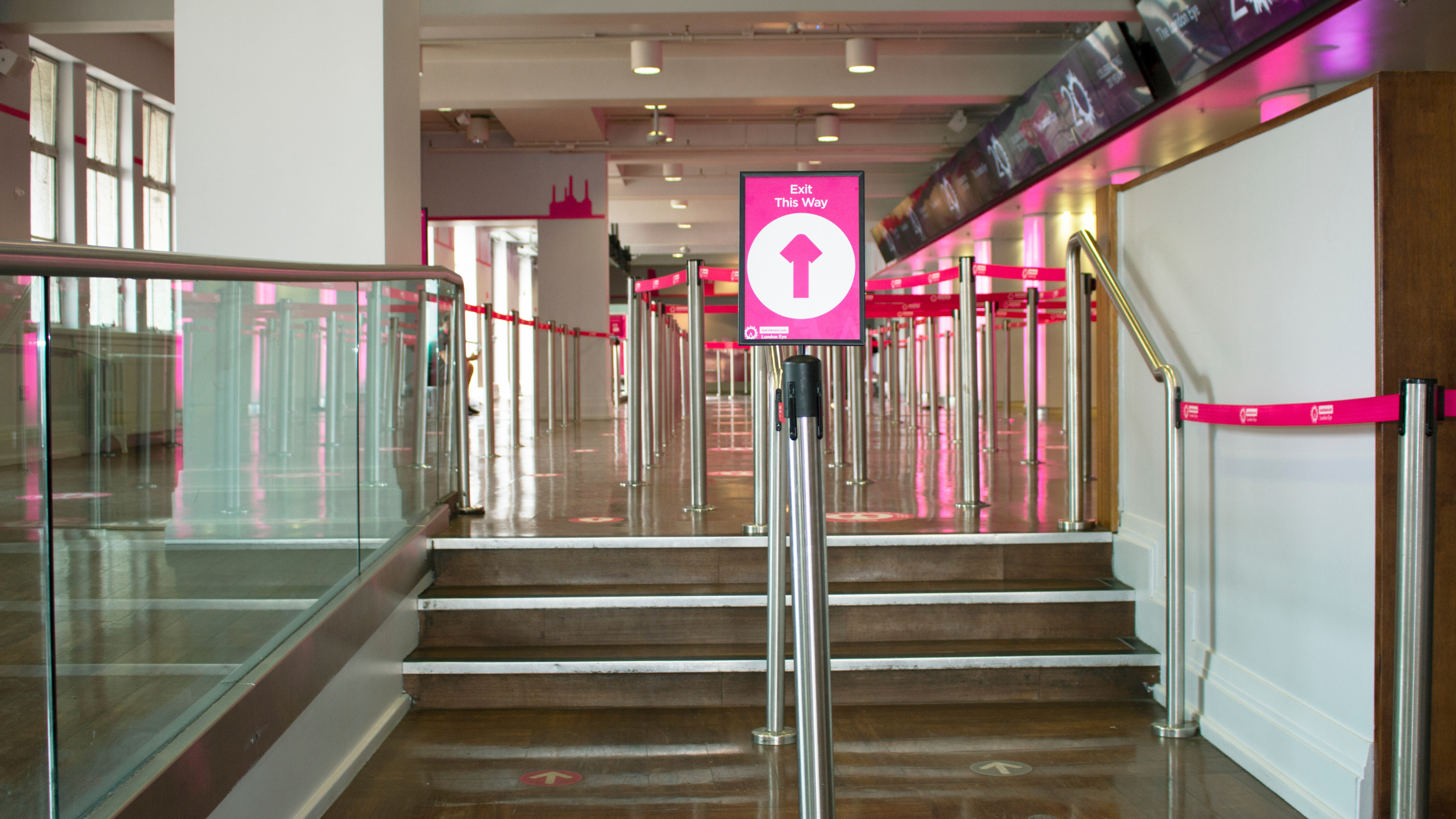- Home
- Sectors
- Solutions
- Tensabarrier®
- Tensamedia® Wayfinding and Signage
- Lawrence® Post & Rope
- Tensator® Airport Passenger Guidance System
- Electronic Queuing – eQ™
- Tensaguide® Modular Barrier System
- Tensator Micam Protection – TMP
- Safety Solutions
- Access Control
- In-Queue Merchandising
- Virtual Queuing – VQMS
- Tensator® Virtual Assistant
- Custom & Bespoke Solutions
- Resources
- About
- Contact Us
- Shop
 English (English)
English (English)
Math, Queue Theory, the Benefits of Serpentine Lines and Heading Left
24
Jun

Qu eue management and mapping out the best possible way for our client’s customer journey is what we do here at Tensator, so naturally we were excited to read Raphael Rosen’s article on “What is the fastest check-out line?”
eue management and mapping out the best possible way for our client’s customer journey is what we do here at Tensator, so naturally we were excited to read Raphael Rosen’s article on “What is the fastest check-out line?”
To set the stage, Raphael first captures the frustrations and the typical scenarios of today’s most common shopping situation – the inevitability of encountering the shopper who has a million coupons or tons of change guaranteed to slow down your checkout lane. He then wisks us away to the realm of mathematics and queue theory – a subject near and dear to our hearts. Yes, there really is such a thing as queue theory, a branch of mathematics that deals with the behavior of waiting lines. Queue theorists have calculated that if you have a single winding line, called a serpentine line, instead of multiple checkout areas, where customers can be sent to the next available register, wait times can be drastically reduced. This method has been proven successful (by our own clients such as UNIQLO, HomeGoods, TJ Maxx and many more) countless times. This is because the one slow person or teller looking for a price check isn’t holding up an entire line; customers move up in the queue to the other open registers. While you will always have some delays – Raphael goes on to say that the impact is much less than for traditional multilane checkouts. We definitely concur, have the case studies to prove it, and are continuing to work with forward thinking clients to implement serpentine queues as valuing time continues to be a critical part of customers’ in-store experience.
Raphael offers another tip to lessen the wait time albeit slightly less scientific. Some people believe that if you have to choose a line to the left or a line to the right, chances are the left-hand route will be faster. With approximately 90% of the population being right-handed, with a tendency to head to the right – this might be a good theory to test out anywhere there are really long lines. MIT professor Dr. Richard Larson, affectionately called Dr. Queue, who has spent over 25 years researching the psychology of waiting in lines also has recommendations. In this recent Thrillist article, he suggests scoping out the people ahead of you to see if they are efficiency minded – less items, no coupons or if there is a helper with the cashier. In the case of supermarket checkouts having a bagger will definitely help expedite lines. And while many of us will take out our mobile devices to distract us from waiting too long and getting frustrated, Dr. Larson suggests we make good use of the time to breathe deep, meditate and maybe even introduce ourselves to the person behind you.
You can read Raphael’s article here, Dr. Larson’s interview here and you can check our Tensator Group’s proven queue management solutions here.



